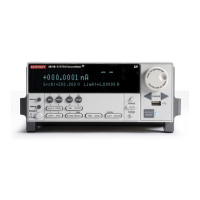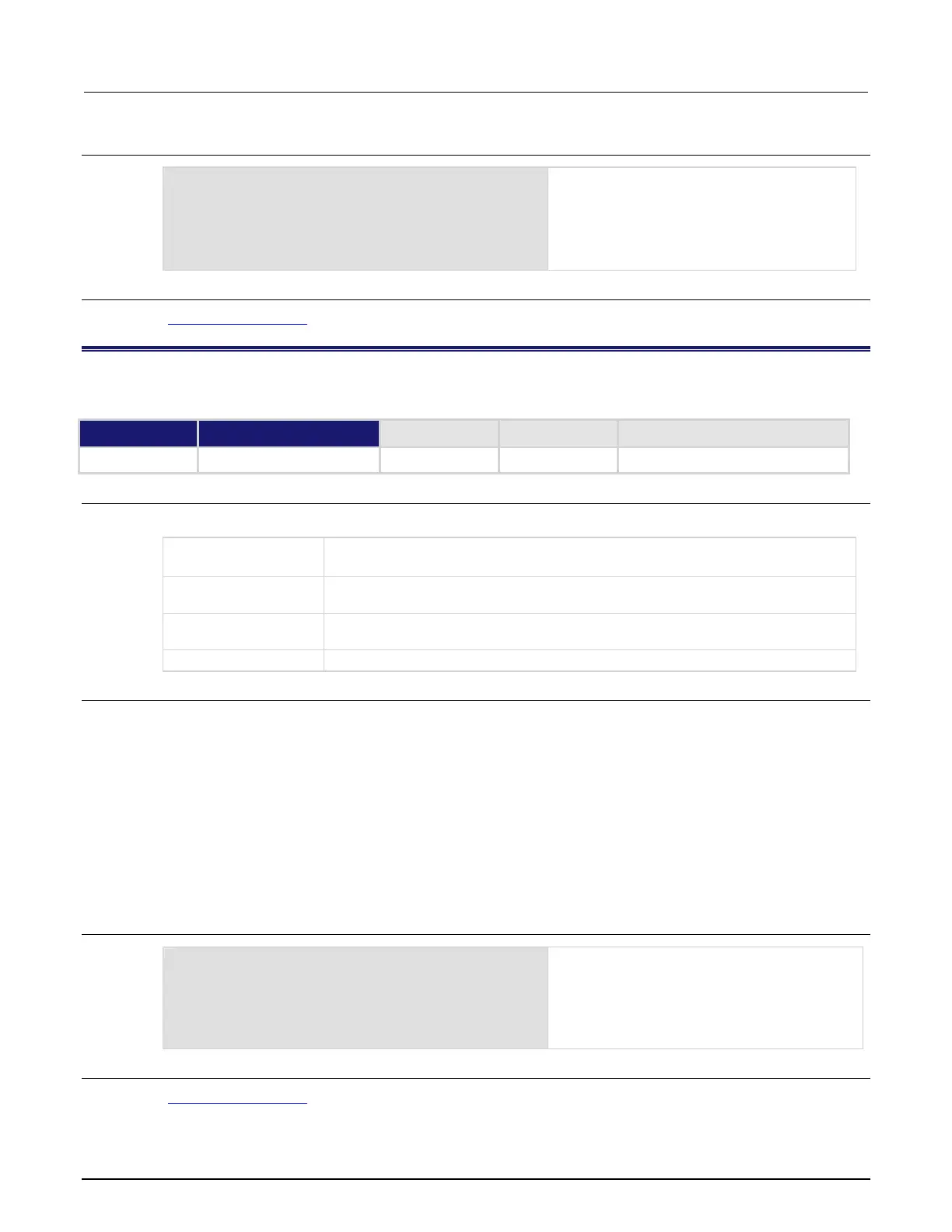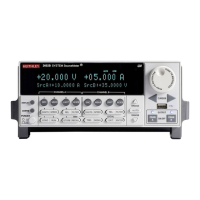7: TSP command reference Series 2600B System SourceMeter® Instrument
7-330 2600BS-901-01 Rev. B / May 2013
Example
SweepILinMeasureV(smua, -1E-3, 1E-3, 0, 100)
This function performs a 100-
sweep starting at −1 mA and stopping at +1 mA.
Voltage is measured at every step (point) in the
sweep. Because stime is set for 0 s, voltage is
measured as quickly as possible after each
Also see
KISweep factory script (on page 5-20)
SweepIListMeasureV()
This KISweep factory script function performs a current list sweep with voltage measured at every step (point).
Type TSP-Link accessible
Affected by Where saved Default value
Usage
SweepIListMeasureV(smu, ilist, stime, points)
System SourceMeter
instrument channel (for example, smua refers to SMU
Arbitrary list of current source values; ilist = {value1, value2,
...valueN}
Settling time in seconds; occurs after stepping the source and before performing a
measurement
Number of sweep points (must be ≥2)
Details
Data for voltage measurements, current source values, and timestamps are stored in smuX.nvbuffer1.
If all parameters are omitted when this function is called, this function is executed with the parameters set to the
default values.
Performs a current list sweep with voltage measured at every step (point):
1. Sets the smu to output ilist amperes value, allows the source to settle for stime seconds, and then
performs a voltage measurement.
2. Sets the smu to output the next ilist step, allows the source to settle for stime seconds, and then
performs a voltage measurement.
3. Repeats the above sequence until the voltage is measured for the last amperes value. The last point in
the list to be measured is points.
Example
testilist = {-100E-9, 100E-9, -1E-6, 1E-6,
-1E-3, 1E-3}
SweepIListMeasureV(smua, testilist,
500E-3, 6)
This function performs a six-point current list
sweep starting at the first point in testilist.
Voltage is measured at every step (point) in the
sweep. The source will be allowed to settle on
each step for 500 ms before a measurement is
Also see
KISweep factory script (on page 5-20)

